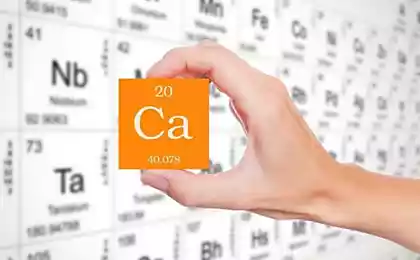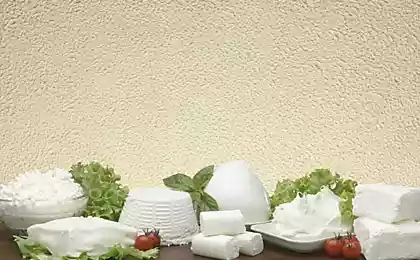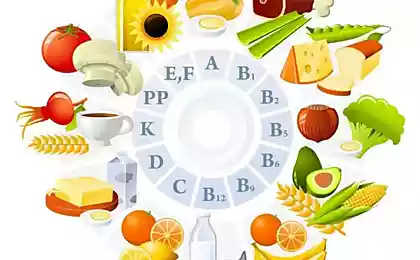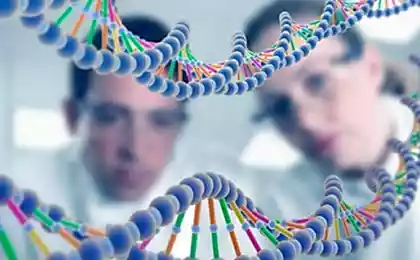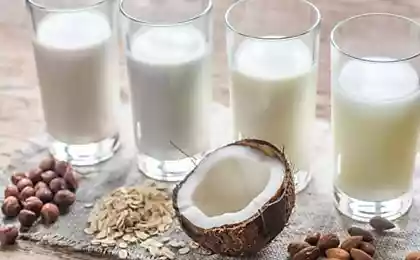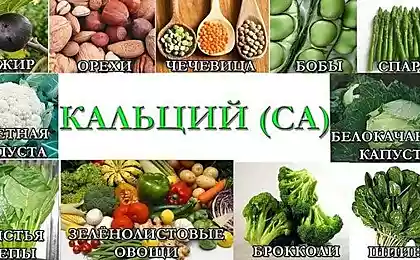201
Why there is less calcium in cottage cheese than in milk
Why calcium is needed, why beautiful teeth will not grow without it and that the most useful element is contained in cottage cheese, caring mothers and grandmothers told us from early childhood.
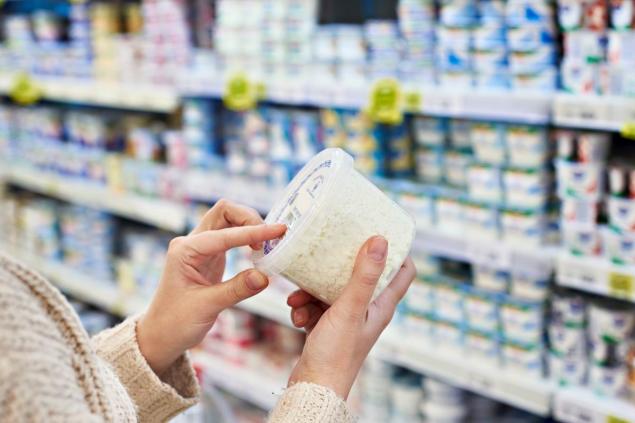
But, as usual, not all long-known things turn out to be true. Not that there's no calcium in the cottage cheese. But there are many products in which it is more, and "Site" I made a list of them for readers.
The importance of calcium for the human body is difficult to overestimate. Due to the lack of this mineral, the structure and strength of bones are violated, nails begin to break, the nervous system, muscles and heart suffer, excess weight appears.
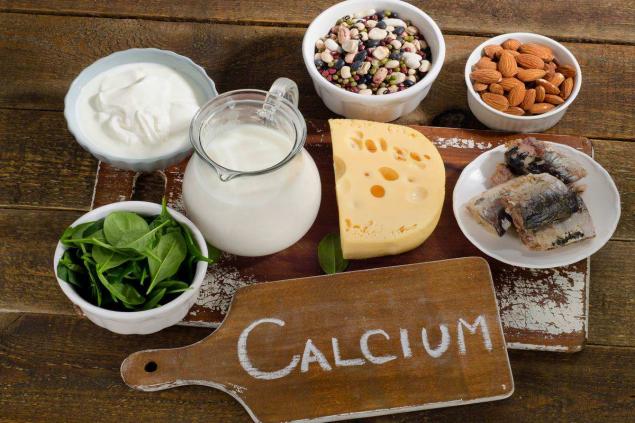
And it is not surprising, because calcium is the most common mineral in the human body: in the adult body it contains about 1.5 kilograms. Most of it is in the bones and teeth (almost 99%).
The norms of its consumption change throughout life. Infants need up to 200 mg per day, adults - about 1000 mg, and women after 50 years to protect against osteoporosis total more - 1200 mg of calcium per day.
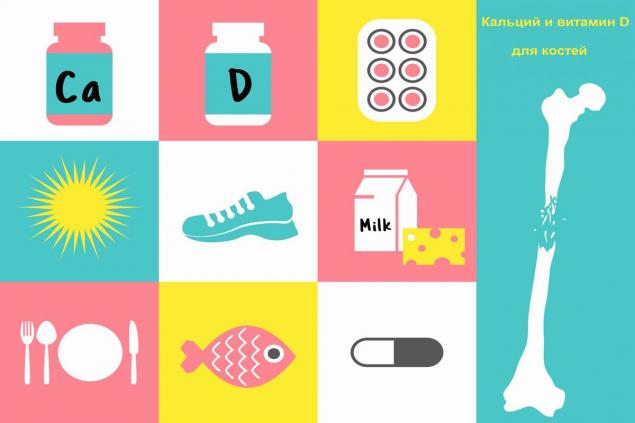
However, to consume this amount does not mean to absorb it. Vitamin D and magnesium play an important role in the process of calcium absorption. Without them, instead of strengthening bones, calcium, according to scientists, settles in the arteries.
Calcium-rich foods (mg per 100 g of weight) Egg shells – 40,000 mg One egg shell contains about 2 grams of calcium. It weighs about 5 grams and in the ground state is placed in one teaspoon. At the same time, calcium from the eggshell, which we habitually throw away, is perfectly absorbed by the human body.
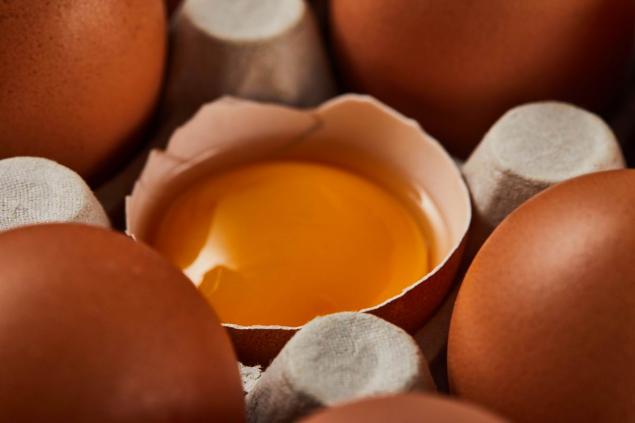
To use the shell as a source of calcium, it must be thoroughly washed. Then boil for 5-10 minutes, it kills the bacteria. It is better to dry with calcination in the oven.
First, it is recommended to slightly stretch the shell with your hands, and then grind it as small as possible in a mortar, coffee grinder, blender. It is advisable to use the shell from the eggs of village chickens. The color of the shell doesn't matter.
Previously, we have already told readers about the most useful seeds of plants, which man has widely used for nutrition and treatment since ancient times. One of these seeds is poppy seed.
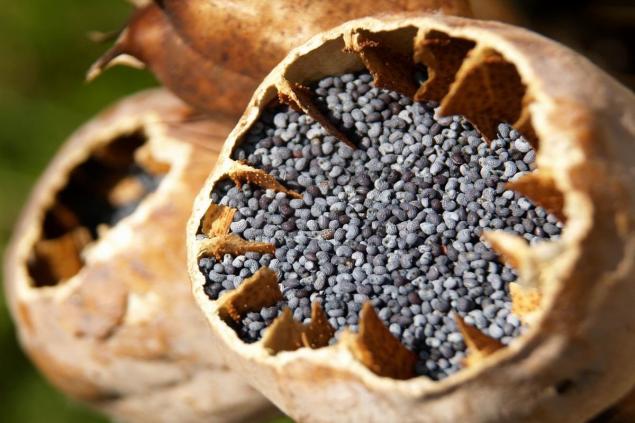
A tablespoon of poppy, for example, contains 13 percent of the daily value of calcium. You will not eat a lot of it, but added to sweet pastries poppy can be a very valuable additive to the diet.
Hard cheese – up to 1,100 mg – is not the richest source of calcium. But absolutely the most delicious! The palm of the championship in calcium content is held by one of the oldest and most famous cheeses in the world - Italian Parmesan.
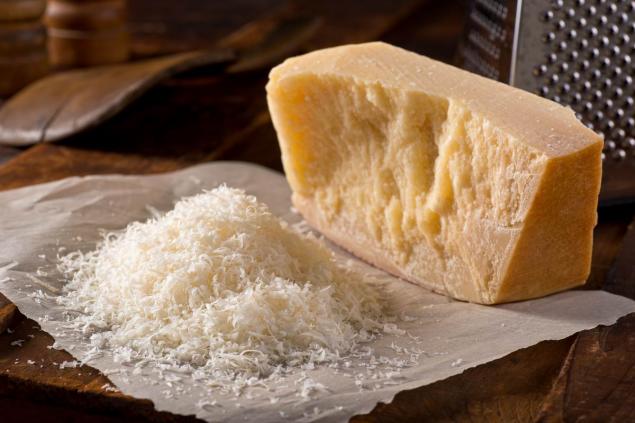
Other cheeses also contain a lot of calcium. A hundred-gram portion of Dutch, Poshekhon, Swiss cheese contains 1000 mg of calcium. "Roquefort" and "Gauda" are slightly behind - 700 mg. Cheese "Adyghe" and "Camber" - about 500 mg.
Cheese, as a source of calcium, has another implicit advantage. They are not the last in the list of rich sources of vitamin D. So we have a doubly useful product - a source of calcium and a means that increases its digestibility.
Sesame - 975 mg of sesame, or sesame, came to us from ancient times. It appears in many legends and legends, and for good reason, because this product is a rich source of protein, a real storehouse of vitamins and minerals.
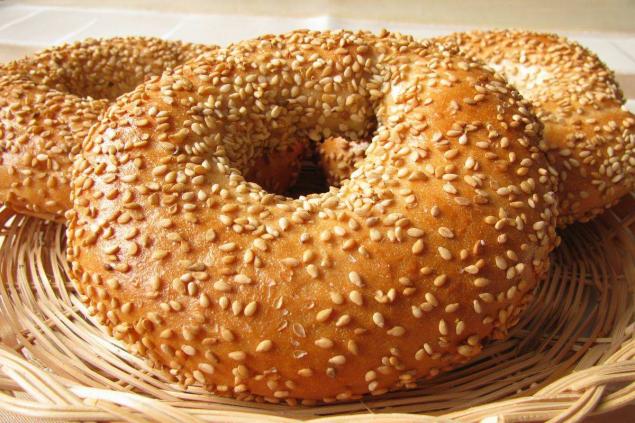
It would seem that an ideal plant source of calcium has been found. Know how to sprinkle sesame salads, and there will be no more problems with calcium. But, unfortunately, not everything is as simple as I would like.
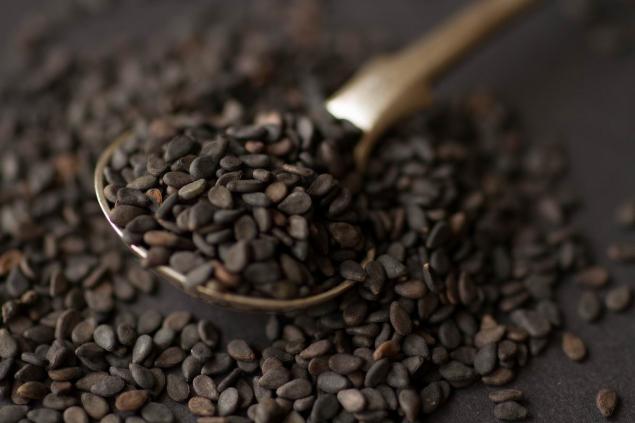
A weighty figure of 975 mg refers to crude, black or brown sesame. White, purified sesame, which we are used to sprinkling pastries, is several times inferior to its relative in calcium content.
However, no one has canceled the record content in sesame iron (14.6 mg per 100 g) and excellent compatibility with salads, fish, chicken. It is delicious, so you can add a lot of what we want.
Sardines in oil - 350-550 mg In 100 grams of canned sardines contains up to 550 mg of calcium, and in the same amount of fresh - only 80 mg. How is that even possible? The answer lies in the details. Fish bones, more than other tissues and organs, are rich in calcium.
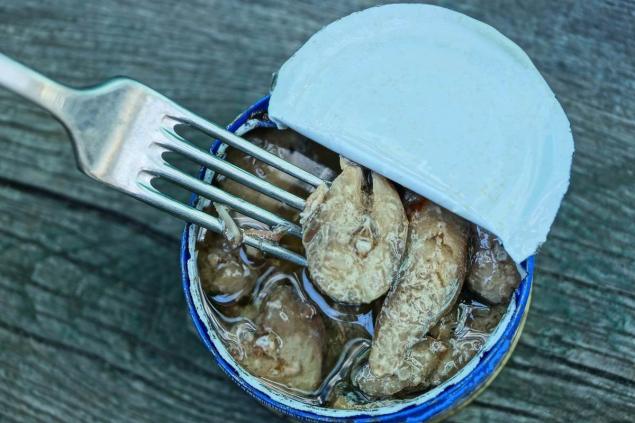
And canned fish often include bones, which, thanks to special processing, become edible. So it turns out that canned sardine contains more calcium than in the edible parts of fresh fish.
Almonds - 216 mg In 100 grams of almonds contains 216 mg of calcium, which is three times more than the same amount of cottage cheese.
171265
Garlic - 181 mg If you like garlic, often add it to dishes and snacks. And it's not just calcium.
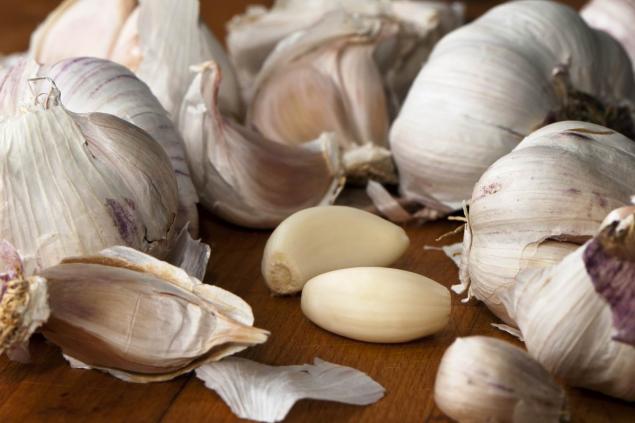
Garlic contains an antibiotic of natural origin allicin, which fights bacteria and increases the protective functions of the immune system.
Basil - 177 mg The ancient healer Avicenna endowed basil with mystical properties. He believed that basil itself knows how to affect a person.
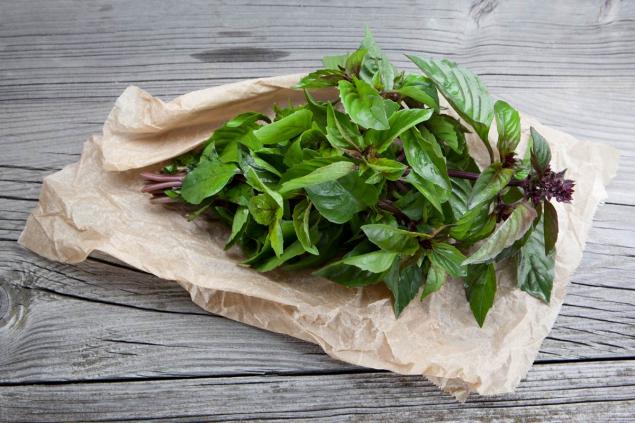
Basil contains vitamins of group C, K and E, essential mass and carotene. Calcium in basil is about like garlic. And a little less than in ... dandelion leaves.
Earlier, we told how to make spring salad from dandelion leaves. In April, it is time to use the shoots of a medicinal plant to restore the vitamin balance.
Parsley - 138 mg Common parsley, which we love for the spicy taste, is not so simple.
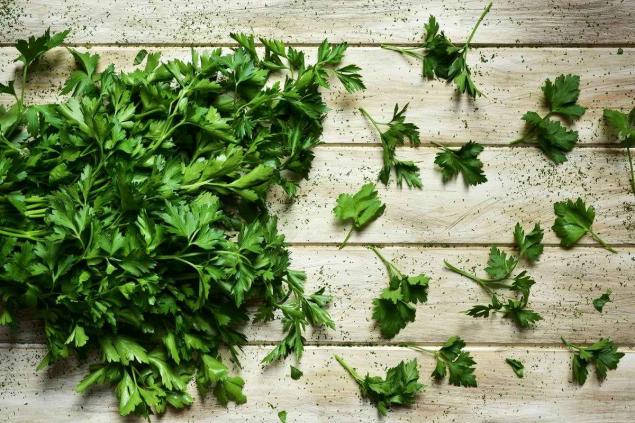
In the list of sources of vitamin C, fragrant grass is higher than lemons and oranges. And the calcium in parsley is almost twice as much as in cottage cheese.
Milk - 125 mg In 100 grams of milk contains 125 mg of milk, in goat's milk a little more - 134 mg, and in cottage cheese, which is made from milk, only 70 mg. Where does the rest of the calcium go?
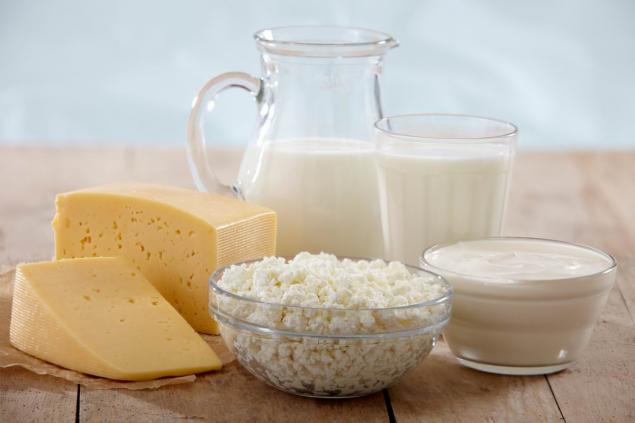
In the production of curds, it goes into serum. Whey is a very undervalued product. It is in acid whey that up to 20% of proteins remain, almost all B vitamins and 60-80% of minerals from milk.
It is worth noting that most people after 3 years of age lose the ability to effectively absorb calcium from milk. Hence the conclusion that one milk the need for calcium does not cover. We need to look for other sources.
A fair amount of calcium is contained in such affordable products as beans (143 mg), dried figs (126-220 mg), spinach (99 mg), walnuts (98 mg), green onions (72 mg).

But, as usual, not all long-known things turn out to be true. Not that there's no calcium in the cottage cheese. But there are many products in which it is more, and "Site" I made a list of them for readers.
The importance of calcium for the human body is difficult to overestimate. Due to the lack of this mineral, the structure and strength of bones are violated, nails begin to break, the nervous system, muscles and heart suffer, excess weight appears.

And it is not surprising, because calcium is the most common mineral in the human body: in the adult body it contains about 1.5 kilograms. Most of it is in the bones and teeth (almost 99%).
The norms of its consumption change throughout life. Infants need up to 200 mg per day, adults - about 1000 mg, and women after 50 years to protect against osteoporosis total more - 1200 mg of calcium per day.

However, to consume this amount does not mean to absorb it. Vitamin D and magnesium play an important role in the process of calcium absorption. Without them, instead of strengthening bones, calcium, according to scientists, settles in the arteries.
Calcium-rich foods (mg per 100 g of weight) Egg shells – 40,000 mg One egg shell contains about 2 grams of calcium. It weighs about 5 grams and in the ground state is placed in one teaspoon. At the same time, calcium from the eggshell, which we habitually throw away, is perfectly absorbed by the human body.

To use the shell as a source of calcium, it must be thoroughly washed. Then boil for 5-10 minutes, it kills the bacteria. It is better to dry with calcination in the oven.
First, it is recommended to slightly stretch the shell with your hands, and then grind it as small as possible in a mortar, coffee grinder, blender. It is advisable to use the shell from the eggs of village chickens. The color of the shell doesn't matter.
Previously, we have already told readers about the most useful seeds of plants, which man has widely used for nutrition and treatment since ancient times. One of these seeds is poppy seed.

A tablespoon of poppy, for example, contains 13 percent of the daily value of calcium. You will not eat a lot of it, but added to sweet pastries poppy can be a very valuable additive to the diet.
Hard cheese – up to 1,100 mg – is not the richest source of calcium. But absolutely the most delicious! The palm of the championship in calcium content is held by one of the oldest and most famous cheeses in the world - Italian Parmesan.

Other cheeses also contain a lot of calcium. A hundred-gram portion of Dutch, Poshekhon, Swiss cheese contains 1000 mg of calcium. "Roquefort" and "Gauda" are slightly behind - 700 mg. Cheese "Adyghe" and "Camber" - about 500 mg.
Cheese, as a source of calcium, has another implicit advantage. They are not the last in the list of rich sources of vitamin D. So we have a doubly useful product - a source of calcium and a means that increases its digestibility.
Sesame - 975 mg of sesame, or sesame, came to us from ancient times. It appears in many legends and legends, and for good reason, because this product is a rich source of protein, a real storehouse of vitamins and minerals.

It would seem that an ideal plant source of calcium has been found. Know how to sprinkle sesame salads, and there will be no more problems with calcium. But, unfortunately, not everything is as simple as I would like.

A weighty figure of 975 mg refers to crude, black or brown sesame. White, purified sesame, which we are used to sprinkling pastries, is several times inferior to its relative in calcium content.
However, no one has canceled the record content in sesame iron (14.6 mg per 100 g) and excellent compatibility with salads, fish, chicken. It is delicious, so you can add a lot of what we want.
Sardines in oil - 350-550 mg In 100 grams of canned sardines contains up to 550 mg of calcium, and in the same amount of fresh - only 80 mg. How is that even possible? The answer lies in the details. Fish bones, more than other tissues and organs, are rich in calcium.

And canned fish often include bones, which, thanks to special processing, become edible. So it turns out that canned sardine contains more calcium than in the edible parts of fresh fish.
Almonds - 216 mg In 100 grams of almonds contains 216 mg of calcium, which is three times more than the same amount of cottage cheese.
171265
Garlic - 181 mg If you like garlic, often add it to dishes and snacks. And it's not just calcium.

Garlic contains an antibiotic of natural origin allicin, which fights bacteria and increases the protective functions of the immune system.
Basil - 177 mg The ancient healer Avicenna endowed basil with mystical properties. He believed that basil itself knows how to affect a person.

Basil contains vitamins of group C, K and E, essential mass and carotene. Calcium in basil is about like garlic. And a little less than in ... dandelion leaves.
Earlier, we told how to make spring salad from dandelion leaves. In April, it is time to use the shoots of a medicinal plant to restore the vitamin balance.
Parsley - 138 mg Common parsley, which we love for the spicy taste, is not so simple.

In the list of sources of vitamin C, fragrant grass is higher than lemons and oranges. And the calcium in parsley is almost twice as much as in cottage cheese.
Milk - 125 mg In 100 grams of milk contains 125 mg of milk, in goat's milk a little more - 134 mg, and in cottage cheese, which is made from milk, only 70 mg. Where does the rest of the calcium go?

In the production of curds, it goes into serum. Whey is a very undervalued product. It is in acid whey that up to 20% of proteins remain, almost all B vitamins and 60-80% of minerals from milk.
It is worth noting that most people after 3 years of age lose the ability to effectively absorb calcium from milk. Hence the conclusion that one milk the need for calcium does not cover. We need to look for other sources.
A fair amount of calcium is contained in such affordable products as beans (143 mg), dried figs (126-220 mg), spinach (99 mg), walnuts (98 mg), green onions (72 mg).
Anna Kiryanova’s Discourse on a Rich Life
Potato planting collapsed without rubbing according to the Gordeev method


